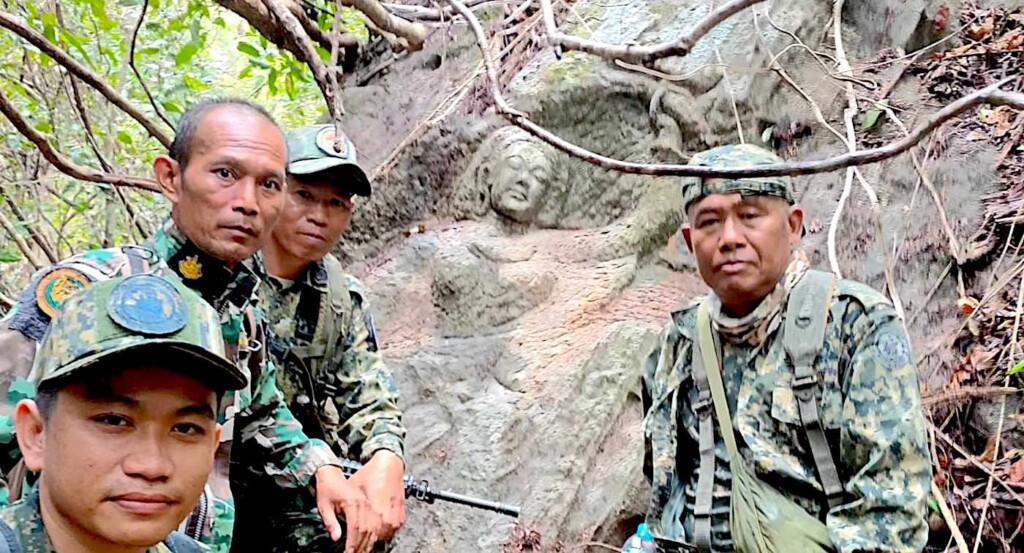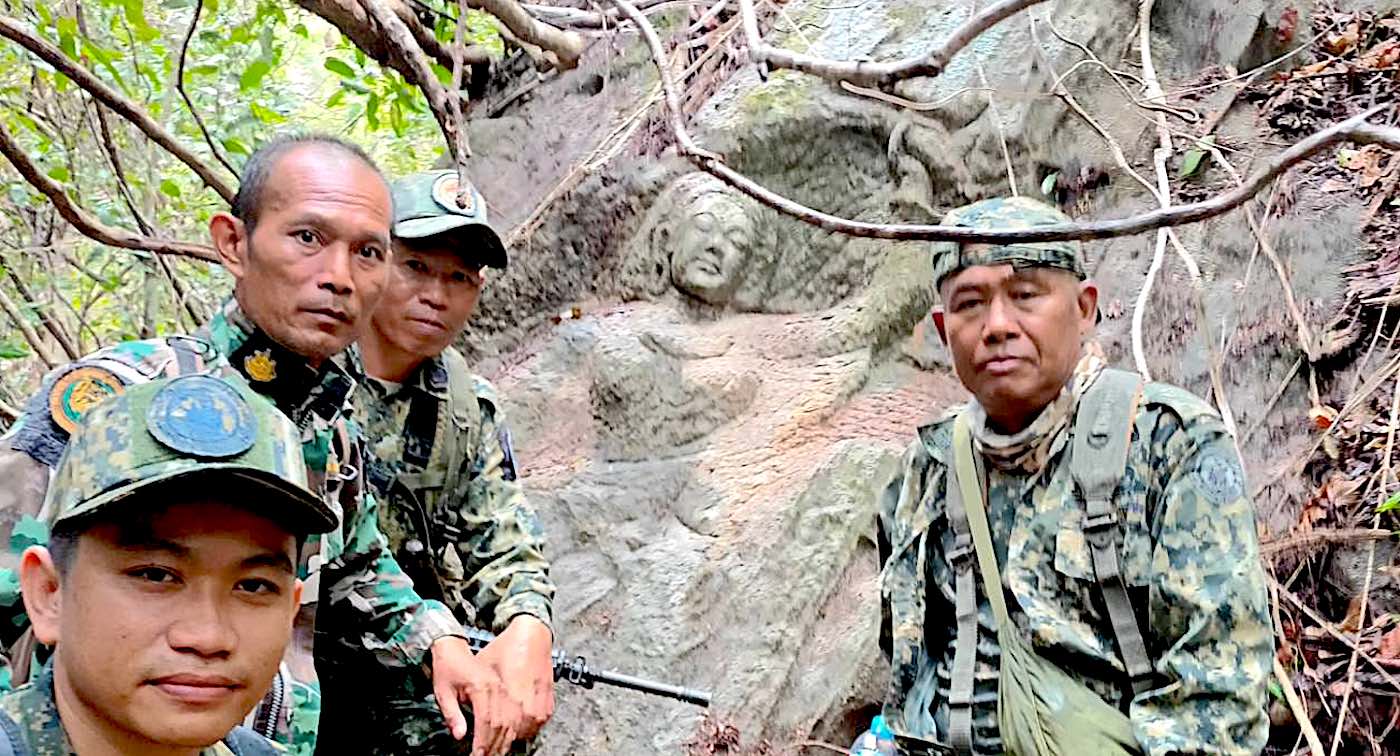
Three Thai villagers were out looking for mushrooms when they came across this boulder depicting a woman in breathtaking detail.
“Went mushroom hunting and found this,” Pramul Kongkratok, one of the locals, wrote on social media according to the Nation Thailand. “I’ve lived here for so long, but just learned we have this around here. It’s a blessing.”
Showing admirable responsibility, Mr. Kongkratok called the Department of National Parks, Wildlife, and Plant Conservation to investigate, who in turn we’re told contacted art and antiquities authorities to ascertain how old the carving might be.
Some theories, however, have quickly emerged: notably that it could have been made in the 6th century during the flourishing of a kingdom called Dvaravati, which was located in modern-day Thailand near the border with Cambodia, exactly the place where the carving was found.
However, the carving style is not really comparable to other examples of Dvaravati reliefs like this one of musicians seated in a row.
Another theory is that it depicts the mother of Lord Buddha, Maya Devi. In part this is because the woman figure is holding a branch of the Bodhi tree, or pipal in Hindi, the tree under which Prince Siddharta Gautama meditated for 7 days and attained Enlightenment.
Rarely depicted alone, and if so, typically lying down in order to illustrate the story of Buddha’s birth—when his mother dreamt the spirit of a white elephant entered her womb, many are as skeptical of the Maya Devi claim as the claim of Dvaravati origin.
DELIGHTFUL MYSTERIES: Dozens of Strange 12-Sided Objects from Roman Times Have Been Found—No One Knows What They’re For
In general, the artists living during the golden age of Buddhist kingdoms in South Asia kept significantly conformist carving styles, while this discovery doesn’t.
MORE ARTISTIC DISCOVERIES: Danish Artist Hides Enormous Trolls in Forests Around the World Using Recycled Wood—LOOK
Smithsonian reports that a Wat, or Thai Buddhist monastery, inhabited by a group of artistically inclined monks, is located less than a mile from where the carving was found in Dong Yai Wildlife Sanctuary.
Whatever the origin, it’s a beautiful carving and a delightful reminder that the world is full of surprises.
SHARE This Delightful Mystery With Your Friends Who Love Asia…





















This expedition mushroomed into something much bigger. Wow! 🙂